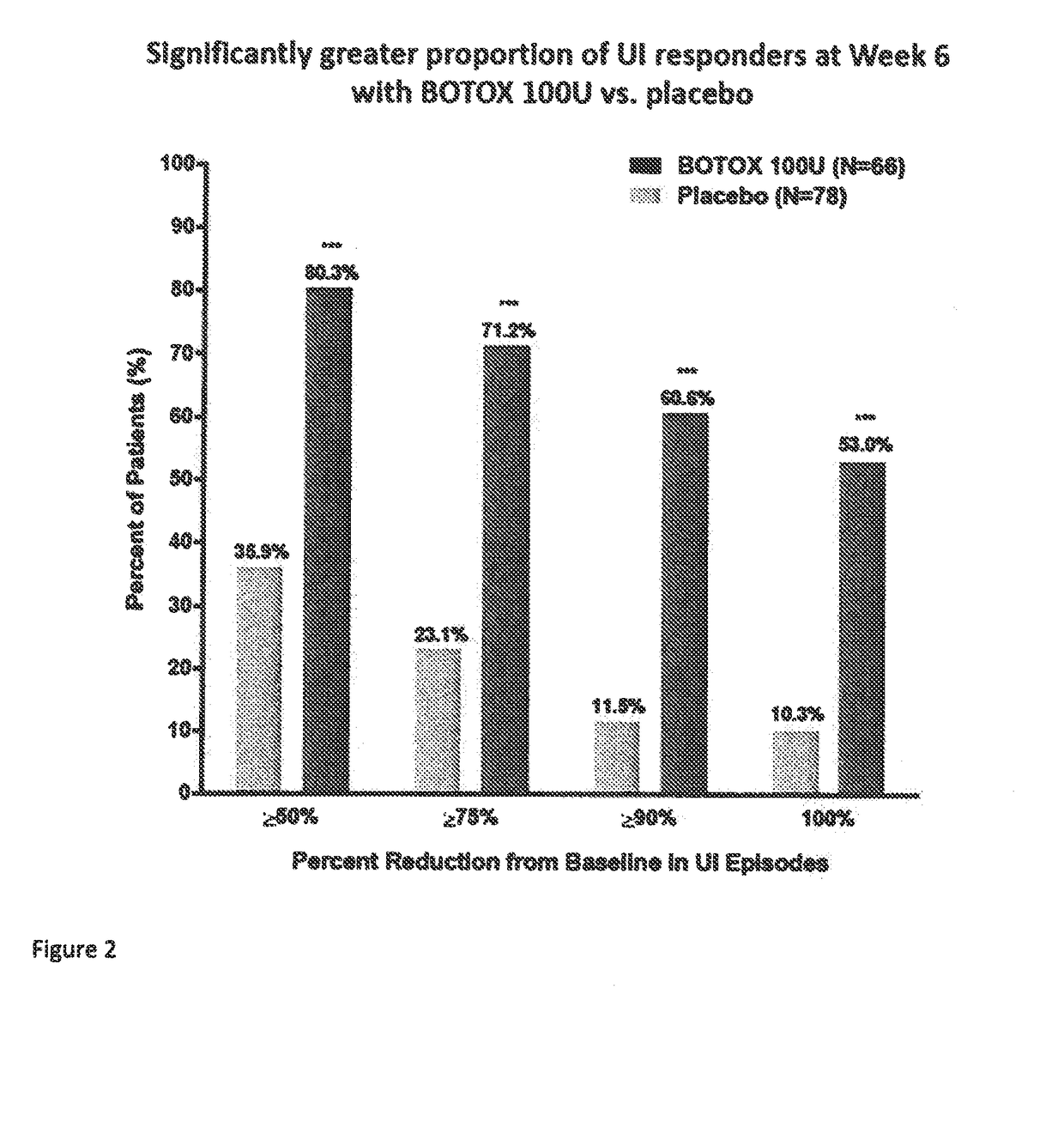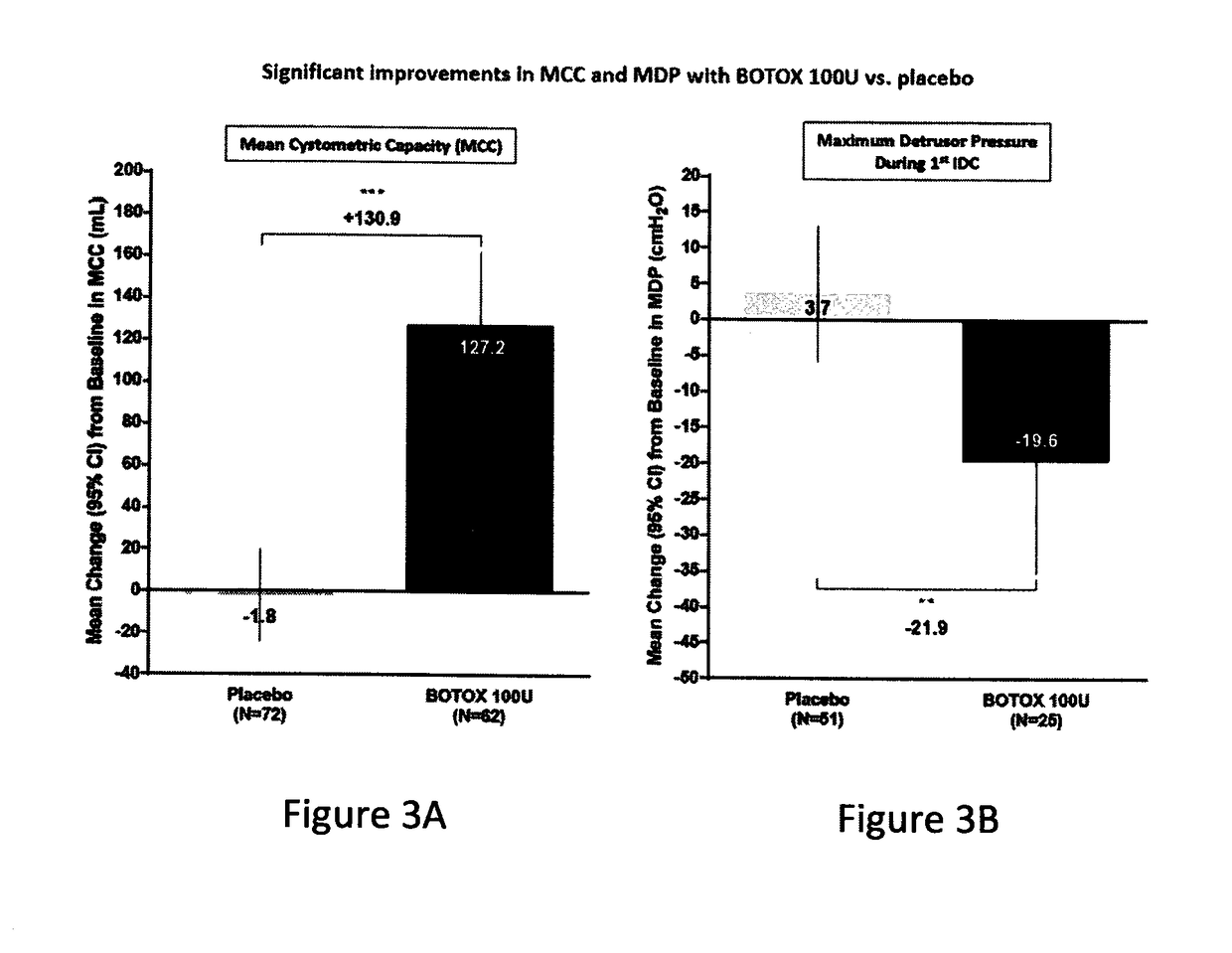Botulinum toxin administration for treatment of neurogenic detrusor overactivity associated urinary incontinence
a technology of neurogenic detrusor and botulinum toxin, which is applied in the direction of peptide/protein ingredients, drug compositions, enzymology, etc., can solve the problems of drug intolerance, negatively affecting a person's life, and disrupting the normal micturition process, so as to improve the quality of life for patients
- Summary
- Abstract
- Description
- Claims
- Application Information
AI Technical Summary
Benefits of technology
Problems solved by technology
Method used
Image
Examples
example 1
Treatment of NDO with 100 Units of OnabotulinumtoxinA
[0083]This was a multicenter, double-blind, randomized, placebo-controlled, parallel-group study designed to assess the safety and efficacy of 100 Units (U) onabotulinumtoxinA) (BOTOX® compared to placebo for the treatment of urinary incontinence due to NDO. The 100 U of onabotulinumtoxinA or the placebo were administered as 30 injections of 1 mL each.
[0084]Patient Population:
[0085]Patients with urinary incontinence due to NDO resulting from MS, who were not catheterizing at baseline and had an inadequate response to or are intolerant to anticholinergic medication were selected. Patient subpopulations included non-catheterizing MS patients, patients not responding or intolerant to anticholinergic medication. Excluded from the study were patients currently using clean intermittent catheterization (CIC) (at any frequency), or an indwelling catheter, to manage their urinary incontinence were excluded from the study.
[0086]Efficacy and...
example 2
Injection Paradigm Sub Study
[0099]A total of 41 patients were enrolled into an injection paradigm subset study, where 22 patients were treated with BOTOX and 19 treated with placebo, where the BOTOX or placebo was administered as 20 injections of 0.5 mL each. Three patients enrolled in the study (2 BOTOX, 1 placebo) discontinued prematurely. Overall, the baseline demographics and disease characteristics were similar between the two treatment groups.
[0100]The efficacy results in the injection paradigm subset study were similar and consistent with results from the study of Example 1, particularly for the BOTOX group. For the primary efficacy endpoint at week six, statistically significant decreases from baseline were observed in the BOTOX group compared to placebo (FIGS. 7A and 7B, FIG. 8). A similar magnitude of improvements were observed in the BOTOX group compared with BOTOX group in the main study for all three secondary efficacy endpoints (MCC, MDP at 1st IDC, and I-QOL total sum...
PUM
 Login to View More
Login to View More Abstract
Description
Claims
Application Information
 Login to View More
Login to View More - R&D
- Intellectual Property
- Life Sciences
- Materials
- Tech Scout
- Unparalleled Data Quality
- Higher Quality Content
- 60% Fewer Hallucinations
Browse by: Latest US Patents, China's latest patents, Technical Efficacy Thesaurus, Application Domain, Technology Topic, Popular Technical Reports.
© 2025 PatSnap. All rights reserved.Legal|Privacy policy|Modern Slavery Act Transparency Statement|Sitemap|About US| Contact US: help@patsnap.com



